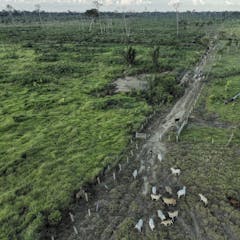
Articles sur Genomics
Affichage de 1 à 20 de 175 articles

Research has revealed how British otters may have been able to recover from species loss in the 1950s with the help of otters from Asia.

Effective use of genomic identification could revolutionize the control of the illegal timber trade.

Genetic analysis reveals one of the teenagers probably had advanced gum disease.

Blood isn’t sterile, and analyzing the bacteria in it could help assess the health of fish and prevent the collapse of their populations.

Cranberries add color and acidity to Thanksgiving menus, but they also have many interesting botanical and genetic features.

Genetic testing can help take the guesswork out of finding the right treatment. For certain diseases. To an extent.

Ancient DNA from Ukraine uncovers the earliest evidence of the arrival of the ‘steppe ancestry’ – the last piece of the modern Western European genetic puzzle.

Our new genomic research finally solves a 150 years of scientific mystery about the unusual and ancient pygmy right whale.

Genetic evidence reveals a long, previously unknown period of adaptation to cold climates in the history of ancient human migrations across the globe.

Time and information is of the essence when tackling infectious diseases across countries and continents.

An appreciation for the moths that chomp holes in your clothes. They eat the inedible, occupy the uninhabitable and overcome every evolutionary obstacle in their way.

Climate change is bringing heightened droughts, heat stress and floods. For our fruit trees, that means tougher conditions. To prepare means mining their genomes to hunt for resilience.

The genetic study challenges previous theories about the origins and culture of the Picts.

On DNA Day, Canada should be inspired by the lifesaving discoveries of its researchers. However, lack of funding threatens Canadian researchers’ ability to meet the challenges of the future.

DNA analysis sheds light on important societies within Africa that existed before colonialism.

Beethoven was afflicted with health conditions for much of his adult life, and wished for their cause to be discovered and made public.

45,000 years ago, people first started arriving in what’s known as Europe today. We thought a worsening ice age made them disappear – but it seems some lineages survived.

The new M1UK strain of strep A has a dangerous ability to make the disease trigger more toxin release in the body.

DNA analysis reveals a large migration of people into Scandinavia during Viking times.

Inbreeding usually leads to an accumulation of genetic defects, but evolution on a small archipelago may have helped the severely inbred Chatham Island black robin to avoid this fate.
